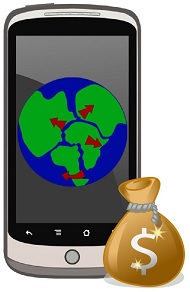Geolocation technology is rapidly increasing in its importance when it comes to sending ads to consumers.
Though location based marketing has been an area where marketers have been pecking away over the last couple of years, trend reports are starting to indicate that this use of geolocation technology is ready for the mainstream and that consumers are going to start seeing it a great deal more.
According to a recent report, the total spending on this ad tech will breach the $10.8 billion mark by 2017.
In three years from now, spending on location based marketing is expected to represent 52 percent of all of the money spent on mobile advertising. This, according to the data from a report predicting the future of the geolocation technology, issued by BIA/Kelsey. That same report suggested that in 2012, marketers were already spending $1.4 billion on these targeted campaigns.
Clearly, in this small span of time, location based marketing spending will head skyward.
Even more interesting is, perhaps, the discovery in that same report that attribution tracking post engagement has already arrived as a “a competitive imperative for mobile advertisers, publishers, networks and ad tech providers.” This, according to the BIA/Kelsey vice president of content, Mike Boland, when discussing the firm’s forecasts.
Boland went on to explain that the penetration of smartphones, in combination with the broad spectrum of different behavioral and location signals make it possible for improved attribution to occur. This, at the same time that it is being compelled by a greater demand from advertisers to tighten their ROI. He stated that “Tying conversions back to specific ad campaigns is the holy grail of advertising, which will make campaign attribution the mobile battleground of 2014.”
The predictions from BIA/Kelsey are considered to be highly optimistic, particularly when taking into consideration the current emerging nature of this form of advertising and, potentially, its methods of attribution.
As location based marketing over mobile channels is still quite new, it is not difficult to explain why only about 3 percent of current ad dollars are headed in that direction. However, if this report is accurate, then this trend will be changing very soon, and quite rapidly.

 Recent research by BIA/Kelsey determined that approximately 40 percent of SMBs are using mobile point of sale (mPOS) technology. These mobile devices are used in store to help consumers to make purchases outside of a traditional checkout counter. It is predicted that this number will only rise as SMBs spend more money on mobility over the next half decade.
Recent research by BIA/Kelsey determined that approximately 40 percent of SMBs are using mobile point of sale (mPOS) technology. These mobile devices are used in store to help consumers to make purchases outside of a traditional checkout counter. It is predicted that this number will only rise as SMBs spend more money on mobility over the next half decade.